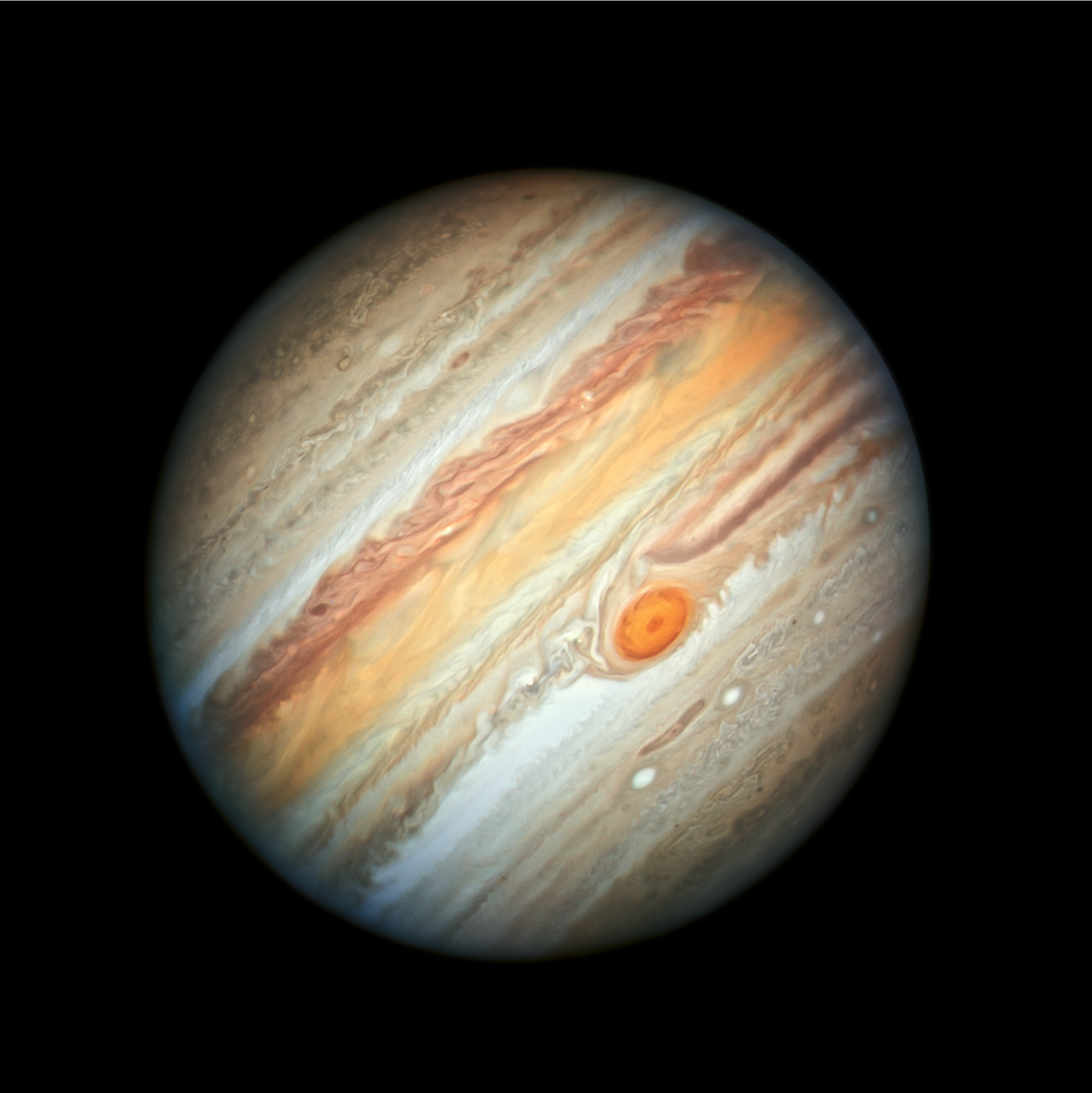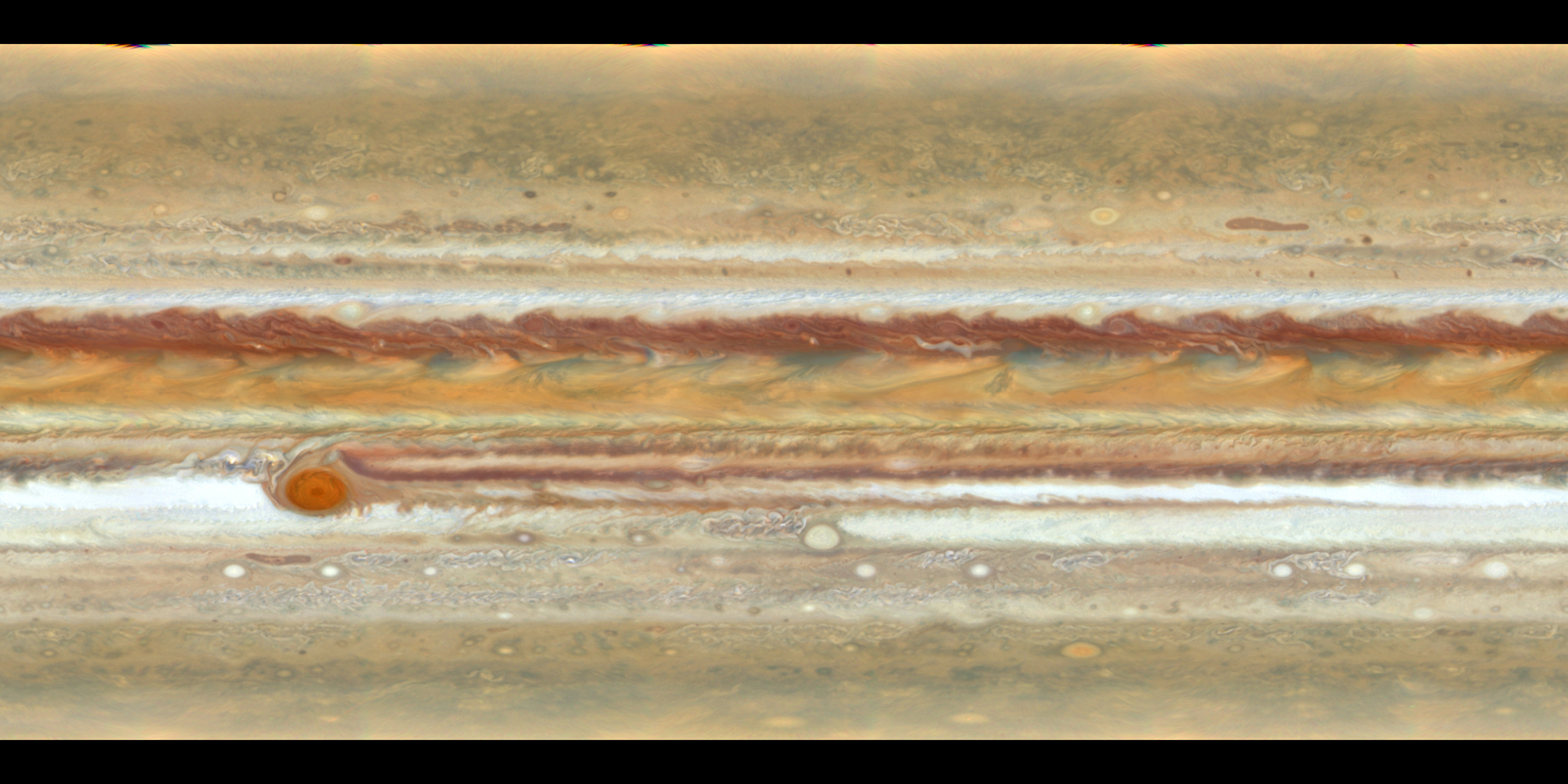Hubble Telescope's Gorgeous New Jupiter Views Could Help Demystify Shrinking Great Red Spot

An amazing new image of Jupiter captured by the Hubble Space Telescope could shed light on the gas giant's mysterious atmospheric dynamics.
One of the most prominent mysteries involves Jupiter's famous Great Red Spot, which has been shrinking since at least the 1800s.
The centuries-old enigma is very complex, said officials with the Space Telescope Science Institute (STScI) in Baltimore, which runs Hubble's science mission: "Attempting to understand the forces driving Jupiter's atmosphere is like trying to predict the pattern cream will make when it is poured into a hot cup of coffee."
Related: Photos: Jupiter, the Solar System's Largest Planet
But scientists have tried. The Earth-orbiting Hubble turns its eyes to all the outer solar system planets at least once a year to check on their weather. And luckily, Jupiter has an interplanetary visitor — NASA's Juno spacecraft — scanning the planet's clouds to gather more information.
Just over a year ago, Hubble observations showed that the spot is getting taller and turning orange as it shrinks in diameter. Historical work suggests that the Great Red Spot was once large enough to cover the width of three Earths, but as of April 2017, the storm was just a little wider than one Earth, raging at a diameter of 10,159 miles (16,350 kilometers), according to NASA.

One new key to the shrinking-spot puzzle could be the color intensity of the clouds that Hubble spotted in its fresh image, which was obtained on June 27. This newest view revealed a "more intense color palette" than seen in other years, STScI officials said, adding that changes in the colors show variations in processes happening in the atmosphere.
Get the Space.com Newsletter
Breaking space news, the latest updates on rocket launches, skywatching events and more!
"The bands are created by differences in the thickness and height of the ammonia ice clouds," STScI officials said in a statement. "The colorful bands, which flow in opposite directions at various latitudes, result from different atmospheric pressures. Lighter bands rise higher and have thicker clouds than the darker bands."
The Great Red Spot itself churns along counterclockwise between two cloud bands, with each band moving in opposite directions above and below the hurricane. Bands cover much of the planet, but they tend to stay in place, even while changing color, due to jet streams constantly screaming through Jupiter's atmosphere at up to 400 mph (644 km/h).
Researchers also noted a worm-shaped feature below the Great Red Spot, which is a cyclone or vortex that has winds spinning the opposite direction of those inside the spot. "Researchers have observed cyclones with a wide variety of different appearances across the planet. The two white, oval-shaped features are anticyclones, like small versions of the Great Red Spot," STScI officials said.
Two more probes are scheduled to visit the Jupiter system in the next decade, and both will focus on the gas giant's icy moons. In 2023, NASA plans to launch the Europa Clipper spacecraft, which will study the potentially habitable, ocean-bearing moon Europa during dozens of flybys. The agency wants to launch a life-hunting Europa lander shortly afterward, although both missions may be in some budgetary trouble.
The European Space Agency's Jupiter Icy Moons Explorer (JUICE), meanwhile, is scheduled to launch in 2022 to examine the satellites Ganymede, Callisto and Europa.
- Photos: Most Powerful Storms of the Solar System
- The Best Hubble Space Telescope Images of All Time!
- In Photos: Juno's Amazing Views of Jupiter
Follow Elizabeth Howell on Twitter @howellspace. Follow us on Twitter @Spacedotcom and on Facebook.
Join our Space Forums to keep talking space on the latest missions, night sky and more! And if you have a news tip, correction or comment, let us know at: community@space.com.

Elizabeth Howell (she/her), Ph.D., was a staff writer in the spaceflight channel between 2022 and 2024 specializing in Canadian space news. She was contributing writer for Space.com for 10 years from 2012 to 2024. Elizabeth's reporting includes multiple exclusives with the White House, leading world coverage about a lost-and-found space tomato on the International Space Station, witnessing five human spaceflight launches on two continents, flying parabolic, working inside a spacesuit, and participating in a simulated Mars mission. Her latest book, "Why Am I Taller?" (ECW Press, 2022) is co-written with astronaut Dave Williams.









